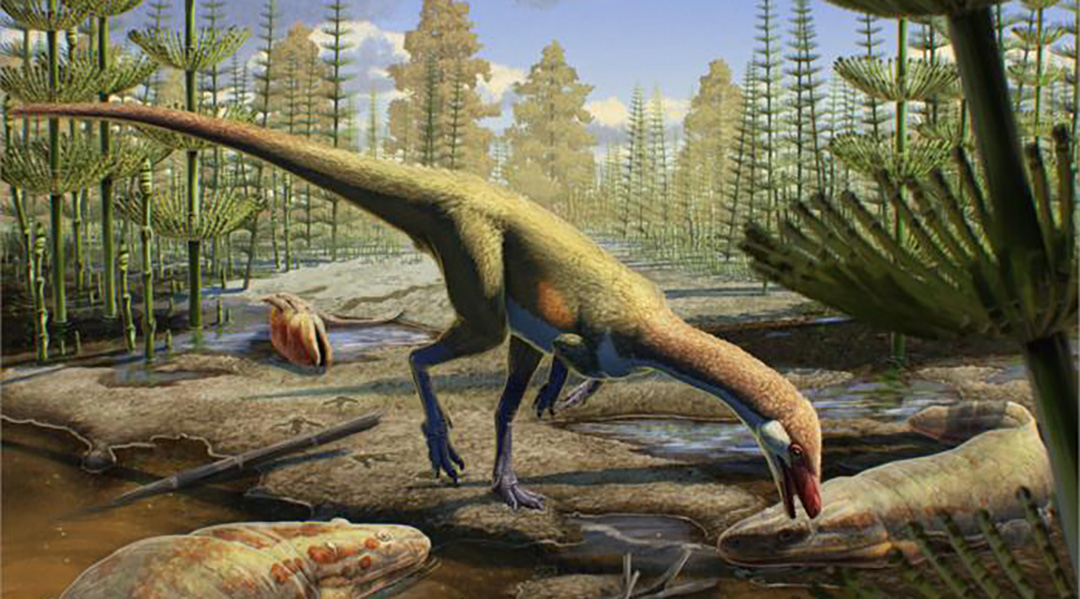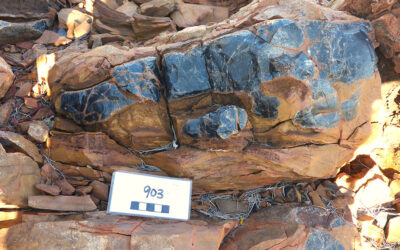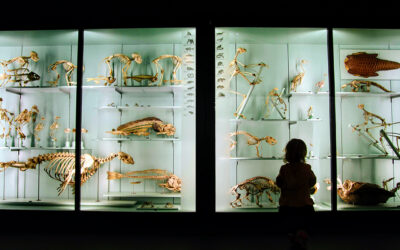A newly discovered dinosaur species that roamed North America over 200 million years ago suggests that dinosaurs populated the northern hemisphere millions of years earlier than previously thought by paleontologists.
The fossils of the species Ahvaytum bahndooiveche, which roughly translates to “long ago dinosaur” in the Shoshone language, were discovered in 2013 by University of Wisconsin–Madison paleontologists in Wyoming. In prehistory, this region was located near the equator as part of Laurasia, the northern part of the supercontinent Pangea, which later fragmented to form the individual continents we see today.
A new analysis of these fossil finds identified this as an undiscovered type of dinosaur and dated them at around 230 million years old. The age of these fossils makes Ahvaytum bahndooiveche the oldest known Laurasian dinosaur. Excitingly, this also suggests this reptile existed in Laurasia at around the same time as the earliest known dinosaurs were roaming Gondwana, the southern region of Pangea. Before this discovery, scientists had thought that dinosaurs emerged in Gondwana millions of years before they spread to Laurasia.
“We have, with these fossils, the oldest equatorial dinosaur in the world — it’s also North America’s oldest dinosaur,” team co-leader and University of Wisconsin Geology Museum research scientist Dave Lovelace said in a press release. The findings are published in the Zoological Journal of the Linnean Society.
Sauropods started out small
Lovelace and colleagues have spent many years investigating these fossils, which were discovered in the Popo Agie Formation, a layer of rock that is found in modern-day crops out in western Wyoming, western Colorado, and Utah and dates back to the Late Triassic, a period of geological time between 237 million years ago and 201 million years ago.
The Ahvaytum bahndooiveche fossil wasn’t intact, but there was enough of it remaining for the team to identify the animal as a dinosaur and a very early sauropod ancestor.
Later sauropods are known for traits such as their behemoth-like size, long necks, long tails, small heads, and walking on four thick, tree trunk–like legs. One example of this type of dinosaur is the Titanosaur group, representing some of the largest land animals ever to walk the Earth.
Appearing millions of years earlier in the fossil record, Ahvaytum bahndooiveche might not immediately jump out as an ancestor of these titans due to the diminutive size of this individual animal, which was around one foot (0.3 meters) tall and three feet (0.9 meters) long from head to tail. The animal is believed to be an adult, but it may have grown a little larger had it lived longer.
“It [Ahvaytum bahndooiveche] was basically the size of a chicken but with a really long tail,” said Lovelace. “We think of dinosaurs as these giant behemoths, but they didn’t start out that way.”
Filling in the gaps
While the legs of this dinosaur were fairly well represented, the team didn’t find skull fragments, which means they can’t yet say what this species fed on.
Though later sauropods were herbivorous, some of their ancestors have been found to have been meat-eaters. That means Ahvaytum bahndooiveche may have been an omnivore, a creature that eats both plants and other animals.
The time period at which the University of Wisconsin–Madison paleontologists and collaborators found Ahvaytum bahndooiveche lived is an important one as it was also the time of immense climate upheaval called the Carnian pluvial episode. This period between 234 million and 232 million years ago was much wetter than the period that preceded it. This led to large stretches of desert being transformed into habitats that were much more suitable for dinosaurs. Thus, the Carnian pluvial episode is linked to an explosion in the diversification of dinosaur species.
Ahvaytum bahndooiveche wasn’t the only brand-new find by this team that indicates dinosaurs roaming the northern hemisphere earlier than suspected. They also discovered the tracks of a dinosaur-like creature in even earlier rock. That implies dinosaurs or their ancestors were present in Laurasia million years before even Ahvaytum bahndooiveche.
“We’re kind of filling in some of this story, and we’re showing that the ideas that we’ve held for so long — ideas that were supported by the fragmented evidence that we had — weren’t quite right,” Lovelace concluded. “We now have this piece of evidence that shows dinosaurs were here in the northern hemisphere much earlier than we thought.”
Reference: D. M. Lovelace., A. M. Kufner., A. J. Fitch., et al., Rethinking dinosaur origins: oldest known equatorial dinosaur-bearing assemblage (mid-late Carnian Popo Agie FM, Wyoming, USA), Zoological Journal of the Linnean Society., (2025), DOI: 10.1093/zoolinnean/zlae153
Feature image: An artist’s rendering shows how Ahvaytum bahndooiveche may have appeared in a habitat dating to around 230 million years ago. Illustration by Gabriel Ugueto














